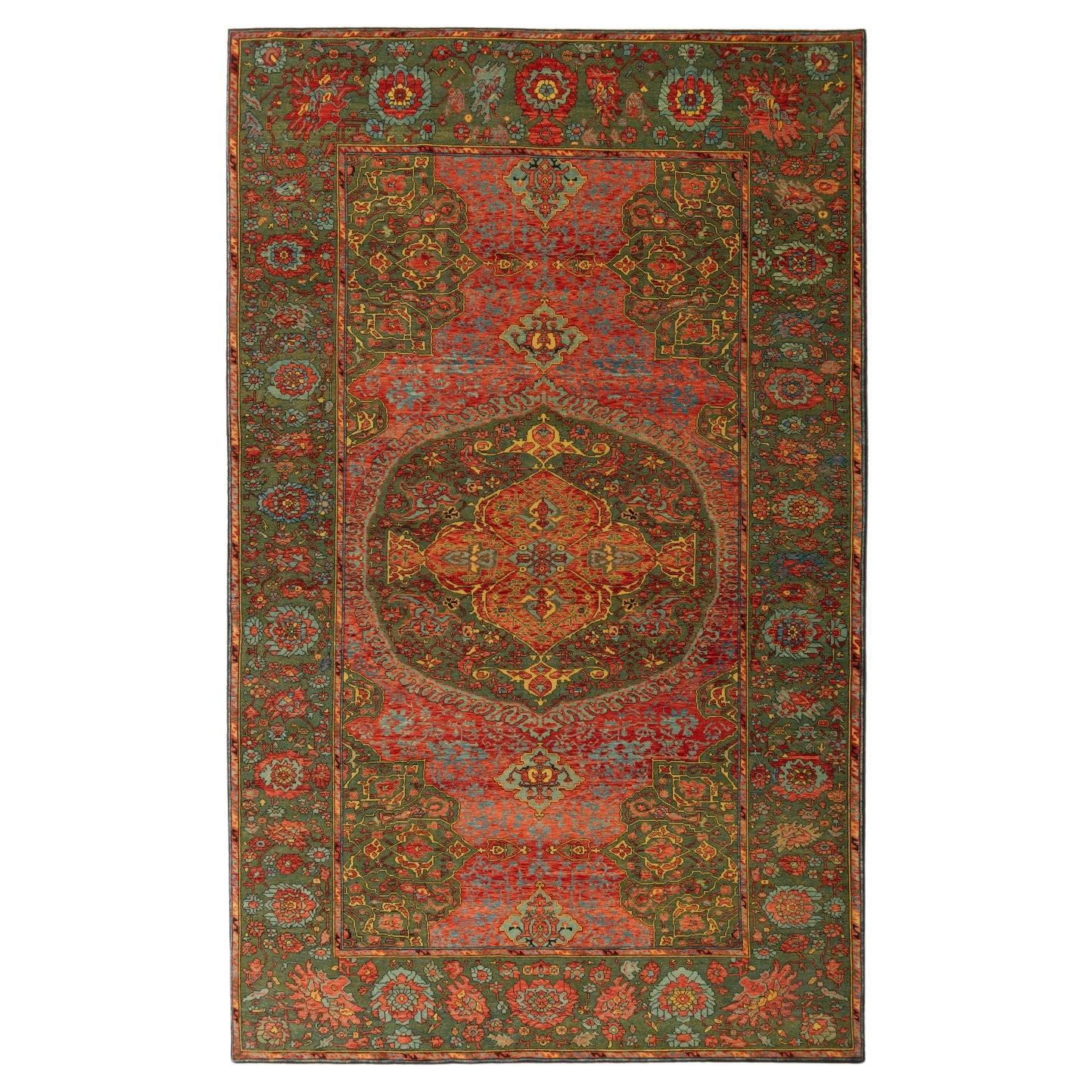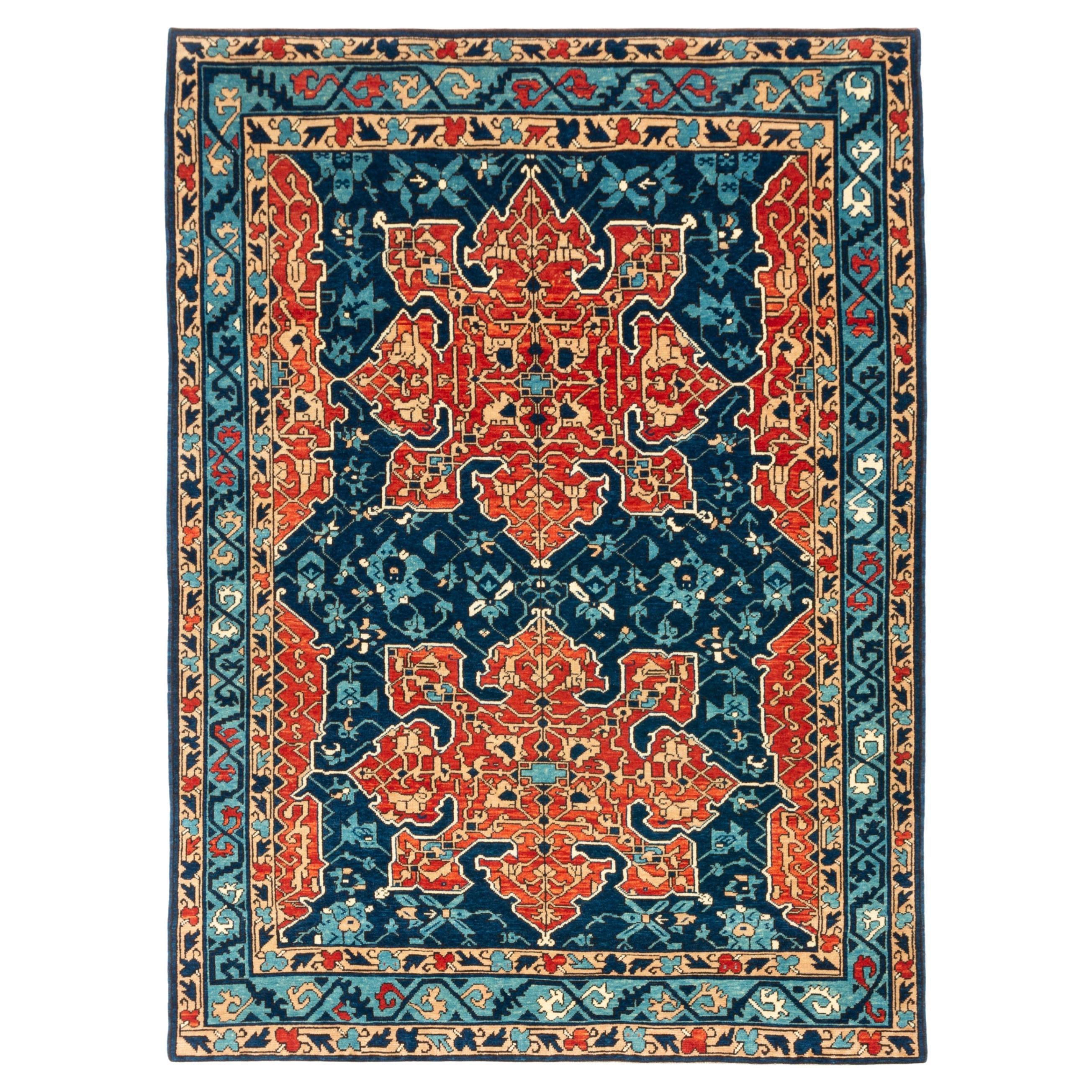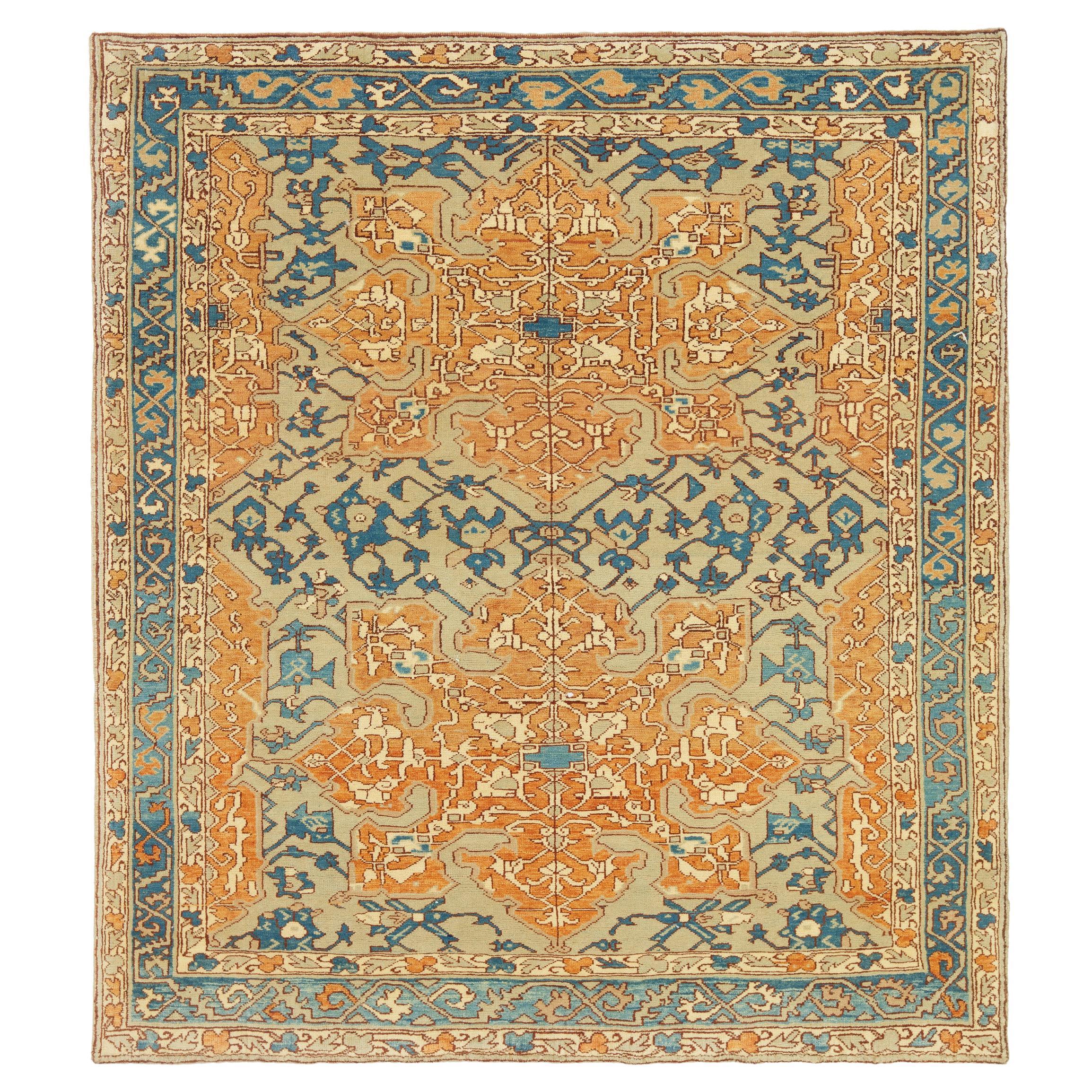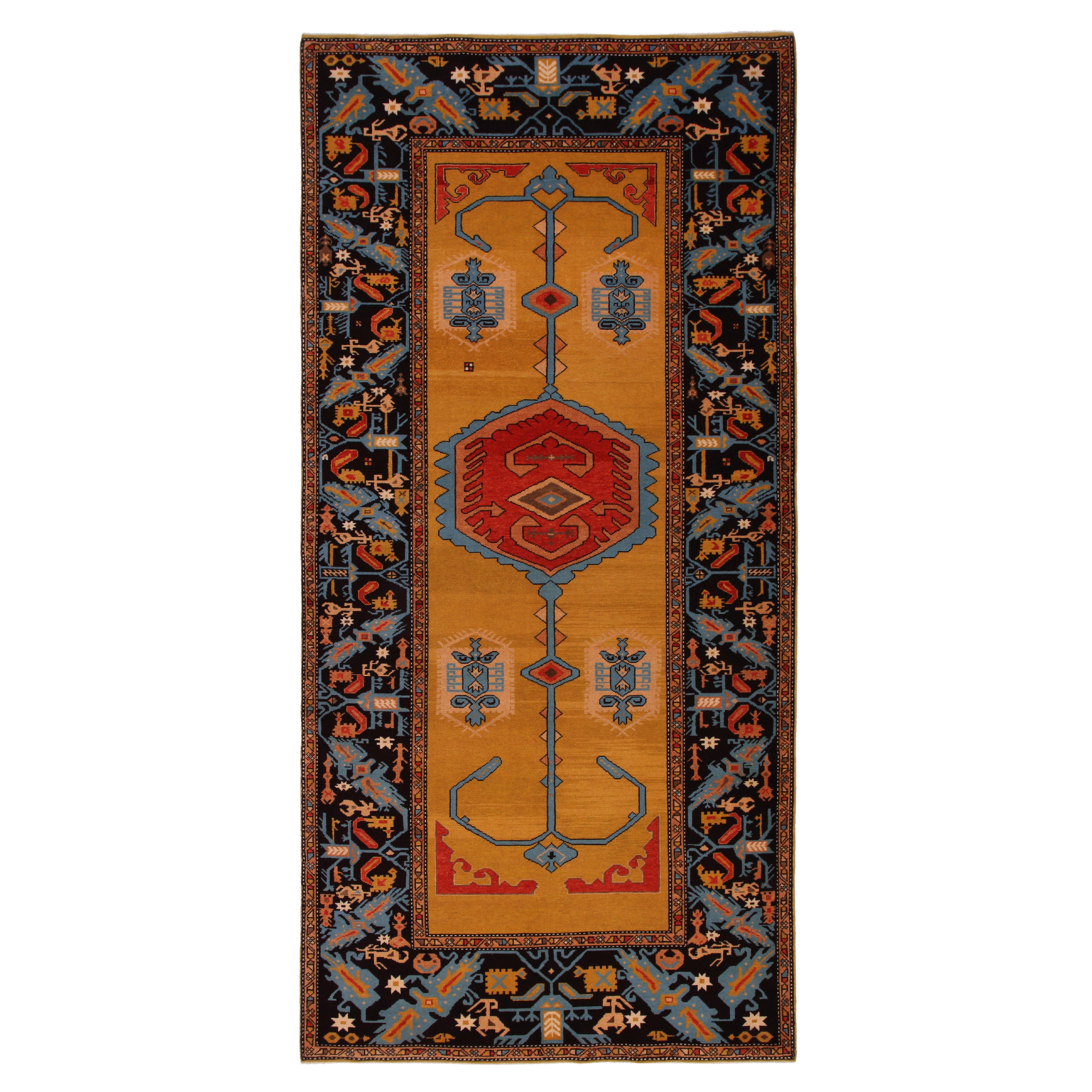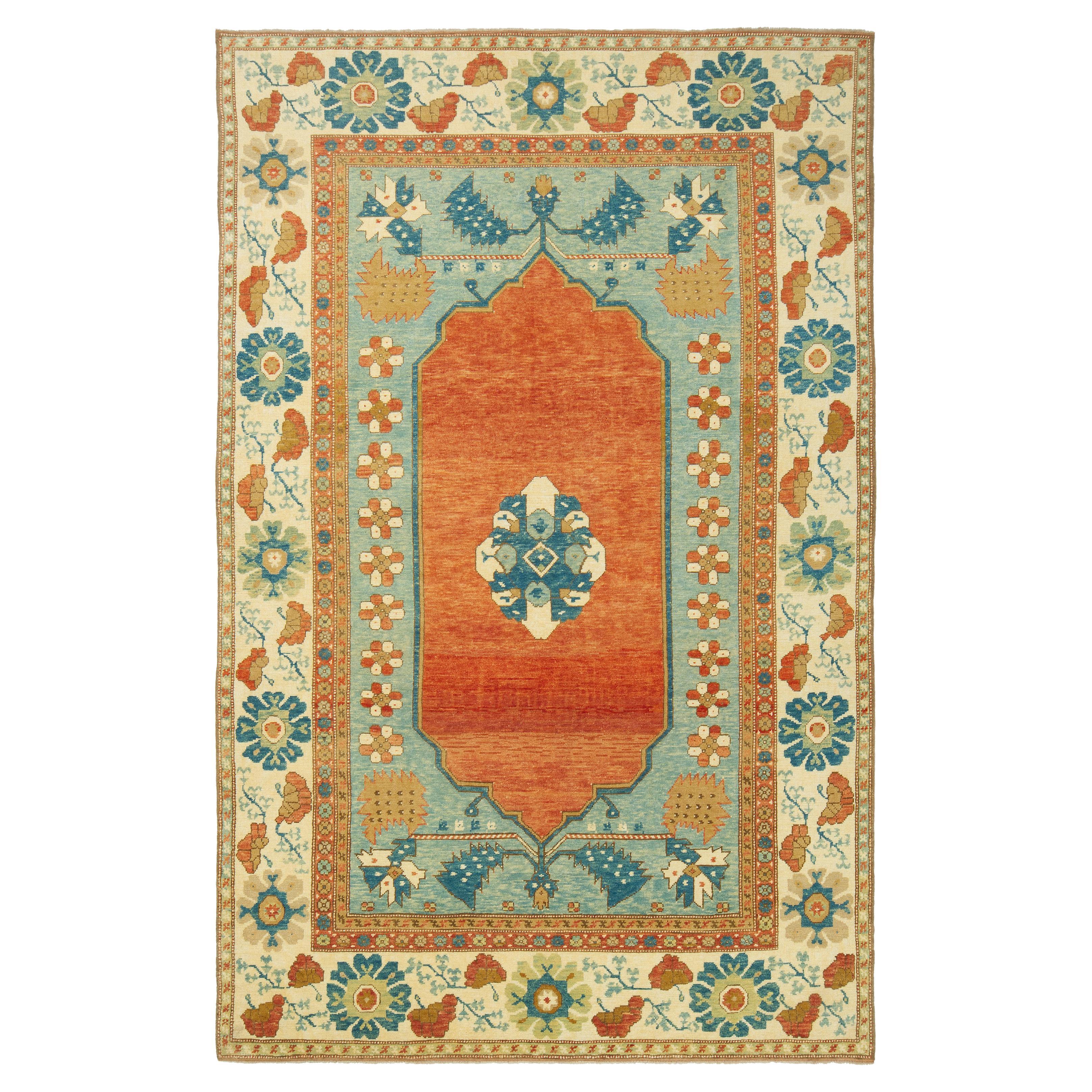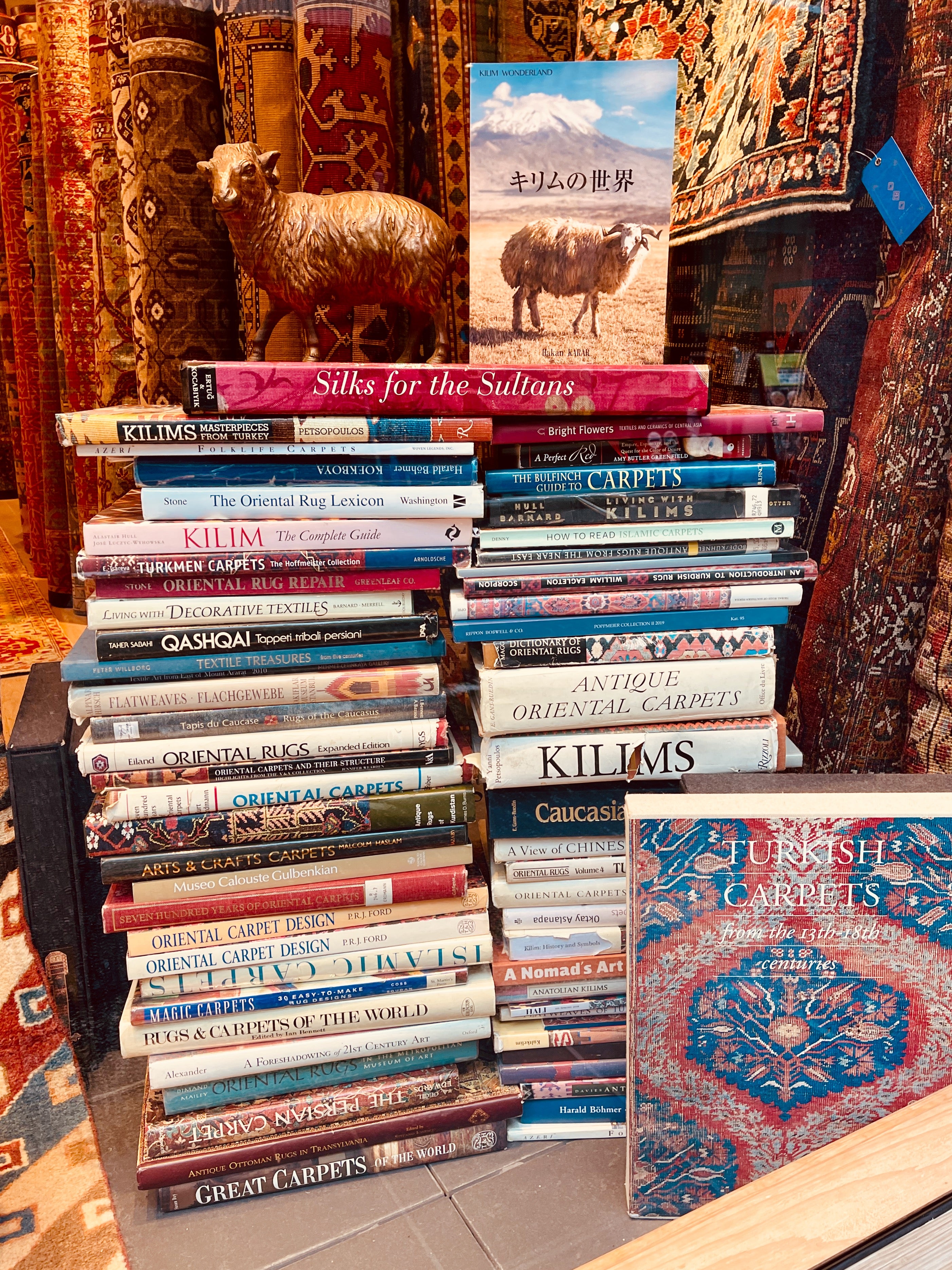Items Similar to Ararat Rugs Medallion Ushak Carpet Museum Piece 17th C. Revival Rug Natural Dyed
Want more images or videos?
Request additional images or videos from the seller
1 of 10
Ararat Rugs Medallion Ushak Carpet Museum Piece 17th C. Revival Rug Natural Dyed
About the Item
The source of the carpet comes from the book How to Read – Islamic Carpets, Walter B. Denny, The Metropolitan Museum of Art, New York 2014 fig.58 and Antique Rugs from the Near East, Wilhelm von Bode and Ernst Kühnel, Klinkhardt & Biermann, Berlin 1958, pg.40 and Oriental Carpets in the Museum of Islamic Art Berlin, Friedrich Spuhler, Faber and Faber Ltd, 1988, pl.11. This 17th-century medallion carpet is from central Anatolia, circa 1500-1550. The town of Ushak, north of Denizli, is probably one of the most important and renowned carpet centers. Carpets have survived from the 16th century and can be seen in several museums. In the 17th century great quantities of Ushak carpets were made for the royal houses of Europe, often incorporating crests; many Christian churches, not only in Transylvania, were often decorated with very large pieces. According to their structure and patterning, there are several types of Ushak carpets: the star Ushak, the medallion Ushak, the 'bird' carpet (with a white background, the name relates to the shapes of the field motifs), and 'Chintamani' carpets (often with a white background and three-ball pattern, mostly in connection with cloud bands). Many great painters have ensured the survival of Ushak carpet designs by including them in their works. Two representatives of the Ushak group take their name from such renowned artists: pieces with plaited band medallions in several variations are named 'Holbein' carpets after Hans Holbein, the younger; 'Lotto' carpets refer to the painter Lorenzo Lotto. Beautiful old Ushak carpets are rare and seldom appear in the trade.This carpet has a finely drawn round medallion, enclosed by two pendants. The red-ground field displays the usual floral motifs and sections of lobed medallions, which simulate an infinite design. The original one is at Turk Islam Eserleri Museum, formerly in Piyale Pasha Mosque, Istanbul. The design of the carpet is interpreted by our designers, and vivid colors are used for this carpet.
Color summary: 7 colors in total;
Imperial Red 415 (Madder Root)
Navy Blue 432 (Indigo - Pomegranate)
Dark Brown 316 (No Dye - Sheep’s Color)
Jericho Jade 25 (Spurge - Indigo)
Natural Wool Color 320 (Specially Washed)
Yellow Green 419 (Henna - Indigo)
Pine Tree 420 (Henna - Indigo)
Group: Anatolian Rugs Family
Area: Ushak Region
Material of Pile: Natural Dyed Hand-spun Wool
Material Warp / Weft: Wool on Wool
Structure: Symmetrical knot on depressed warp inclining to the right
Knots Density: 39x39
Production Place: Southeastern Anatolia – Adiyaman
Pattern Code: MK 1088 200X300 AR0287
Weight: 17.40kg
Location: Tokyo
Dimensions:
10 ft 4 in x 6 ft 5 in ( 317cm x 198cm )
- Creator:Ararat Rugs (Manufacturer)
- Dimensions:Width: 77.96 in (198 cm)Length: 124.81 in (317 cm)
- Style:Oushak (In the Style Of)
- Materials and Techniques:
- Place of Origin:
- Period:
- Date of Manufacture:2023
- Production Type:New & Custom(One of a Kind)
- Estimated Production Time:Available Now
- Condition:
- Seller Location:Tokyo, JP
- Reference Number:1stDibs: LU8206238891682
ARARAT RUGS
We know and believe that the geography we come from, our past, and our lifestyle are the most important bond between us to carry the oriental carpet art and culture to the next generations along with our core values in our ongoing growth journey.
We are aware that the way to achieve this goal and carry this priceless art and culture to the future depends on a lot of work with all our people every day while adhering to our core values.
For us, art is meaningful in the sense that it brings together various cultures around the world. It is an honor for us that oriental carpet art and culture have been instrumental in this for centuries and that we are a part of this business.
We are tirelessly keeping an eye on auction house information around the world about carpets. New York's Metropolitan, London's Victoria & Albert Museums, and other famous art museums, as well as small specialized museums that house private collections, and books about oriental carpets to collect information on outstanding carpet designs and patterns from around the world. It's our Self-improving and Self-developing culture.
As Turkish Culture of Hospitality, the Kurdish Culture of Generosity, and as Japanese Culture of Business Punctuality; are the most important values that this multicultural background has taught and bequeathed to us. It is essential and valuable for us that you feel this feeling not only by looking at our oriental carpets but from the moment you contact us.
About the Seller
5.0
Gold Seller
These expertly vetted sellers are highly rated and consistently exceed customer expectations.
Established in 1970
1stDibs seller since 2023
12 sales on 1stDibs
Typical response time: 1 hour
- ShippingRetrieving quote...Ships From: Tokyo, Japan
- Return PolicyA return for this item may be initiated within 7 days of delivery.
More From This SellerView All
- Ararat Rugs Medallion Ushak Carpet Museum Piece 17th C. Revival Rug Natural DyedBy Ararat RugsLocated in Tokyo, JPThe source of the carpet comes from the book How to Read – Islamic Carpets, Walter B. Denny, The Metropolitan Museum of Art, New York 2014 fig.58 and Antique Rugs from the Near East,...Category
21st Century and Contemporary Turkish Oushak Turkish Rugs
MaterialsWool, Organic Material, Natural Fiber
- Ararat Rugs Star Ushak Carpet 16th Century Museum Piece Revival Rug Natural DyedBy Ararat RugsLocated in Tokyo, JPThe source of the carpet comes from the book How to Read – Islamic carpets, Walter B. Denny, The Metropolitan Museum of Art, New York 2014 fig.46-47 and Oriental Rugs, Volume 4 Turkish, Kurt Zipper and Claudia Fritzsche, Antique Collectors’ Club, 1989 nr.82. This 16th century deeply serrated eight-lobbed starlike medallion rug is from central Anatolia. Similar designs are exhibited at various museums. The town of Ushak, north of Denizli, is probably one of the most important and renowned carpet centers. Carpets have survived since the 16th century and can be seen in several museums. In the 17th century great quantities of Ushak carpets were made for the royal houses of Europe, often incorporating crests; many Christian churches, not only in Transylvania, were often decorated with very large pieces. According to their structure and patterning, there are several types of Ushak carpets: the star Ushak, the medallion Ushak, the ‘bird’ carpet (with a white background, the name relates to the shapes of the field motifs), and ‘Chintamani’ carpets (often with a white background and three-ball pattern, mostly in connection with cloud bands). Many great painters have ensured the survival of Ushak carpet designs by including them in their works. Two representatives of the Ushak group take their name from such renowned artists: pieces with plaited band medallions in several variations are named ‘Holbein’ carpets after Hans Holbein, the younger; ‘Lotto’ carpets...Category
21st Century and Contemporary Turkish Oushak Turkish Rugs
MaterialsWool, Natural Fiber, Organic Material
- Ararat Rugs Star Ushak Carpet 16th Century Museum Piece Revival Rug Natural DyedBy Ararat RugsLocated in Tokyo, JPThe source of the carpet comes from the book How to Read – Islamic Carpets, Walter B. Denny, The Metropolitan Museum of Art, New York 2014 fig.46-47 and Oriental Rugs, Volume 4 Turkish, Kurt Zipper and Claudia Fritzsche, Antique Collectors’ Club, 1989 nr.82. This 16th-century deeply serrated eight-lobbed starlike medallion rug is from central Anatolia. Similar designs are exhibited at various museums. The town of Ushak, north of Denizli, is probably one of the most important and renowned carpet centers. Carpets have survived since the 16th century and can be seen in several museums. In the 17th century great quantities of Ushak carpets were made for the royal houses of Europe, often incorporating crests; many Christian churches, not only in Transylvania, were often decorated with very large pieces. According to their structure and patterning, there are several types of Ushak carpets: the star Ushak, the medallion Ushak, the ‘bird’ carpet (with a white background, the name relates to the shapes of the field motifs), and ‘Chintamani’ carpets (often with a white background and three-ball pattern, mostly in connection with cloud bands). Many great painters have ensured the survival of Ushak carpet designs by including them in their works. Two representatives of the Ushak group take their name from such renowned artists: pieces with plaited band medallions in several variations are named ‘Holbein’ carpets after Hans Holbein, the younger; ‘Lotto’ carpets refer to the painter Lorenzo Lotto...Category
21st Century and Contemporary Turkish Oushak Turkish Rugs
MaterialsWool, Natural Fiber, Organic Material
- Ararat Rugs Transilvanian Ushak Prayer Rug Anatolian Revival Carpet Natural DyedBy Ararat RugsLocated in Tokyo, JPCarpets called Siebenburgen or Transylvanian are those which have been found in the Protestant churches of Siebenburgen. Some of them carry a label on the back stating where, when and by whom the piece has been donated to the church. Siebenbürgen/Transylvania is an area between the South and the East Carpathian and West Siebenbürgen mountains in Romania. In 1541 the area came under the rule of the Ottoman Empire and became a Turkish protectorate of the principality of Transylvania. Legend has it that Suleiman ‘the magnificent’ sent his vizier with the gift of a beautiful carpet to the Black Church...Category
21st Century and Contemporary Turkish Oushak Turkish Rugs
MaterialsWool, Natural Fiber, Organic Material
- Ararat Rugs the Sailer Anchor Carpet 17th Century Anatolian Revival Natural DyedBy Ararat RugsLocated in Tokyo, JPThe source of carpet comes from the book Orient Star – A Carpet Collection, E. Heinrich Kirchheim, Hali Publications Ltd, 1993 nr.198. This is a dramatic and unique field design 16th...Category
21st Century and Contemporary Turkish Oushak Turkish Rugs
MaterialsWool, Natural Fiber, Organic Material
- Ararat Rugs Medallion Rug 18th C Anatolian Turkish Revival Carpet Natural DyedBy Ararat RugsLocated in Tokyo, JPThe source of the rug comes from the book Orient Star – A Carpet Collection, E. Heinrich Kirchheim, Hali Publications Ltd, 1993 nr.166. This is similar to ...Category
21st Century and Contemporary Turkish Oushak Turkish Rugs
MaterialsWool, Natural Fiber, Organic Material
You May Also Like
- Antique Ushak Rug - Early 18th Century Anatolian Ushak Rug, Antique CarpetLocated in Sultanahmet, 34Early 18th Century Anatolian Ushak Rug Size 142 x 220 cm (4,65 x 7,21 ft) By the 16th century the principal manufacture of large commercial carpets in Ottoman Turkey had been established at Uşak, which produced rugs for palace and mosque use and for export. In the 18th and early 19th centuries, this manufacture came increasingly under European control. By the close of the 19th century the carpets had become coarser and rougher, with designs calculated to please European tastes. The quality had probably never been as fine as that of the court carpets, made nearer to the capital cities. The best-known pattern among the older carpets is a scheme of large, rounded medallions of two types, alternating upon a field of brick red or, occasionally, of dark blue. A second common pattern shows diagonal rows of eight-pointed star medallions alternating with diamonds. In the 18th and 19th centuries, a number of carpets with prayer-niche motifs in rows were made for mosque worship. Holbein rugs...Category
Antique Early 18th Century Turkish Turkish Rugs
MaterialsWool
- Isfahan Carpet Fragment Rug, 17th CenturyLocated in San Francisco, CAIsfahan Carpet Fragment Rug, 17th Century Isfahan rugs are known for their intricate patterns, often featuring floral and arabesque motifs inspired by...Category
Antique 17th Century Persian Persian Rugs
MaterialsWool
- Antique Ushak Carpet - Late of 19th Century Ushak Rug, Antique Rug, Turkish RugLocated in Sultanahmet, 34Antique Ushak Carpet, Late 19th Century This elegant late 19th century antique Ushak carpet brings the elegance and sophisticated design of the Ottoman period to your home. This han...Category
Antique Late 19th Century Turkish Turkish Rugs
MaterialsWool
- Antique Ushak Carpet - Late 19th Century Turkish Ushak Carpet, Antique CarpetLocated in Sultanahmet, 34This elegant antique Turkish Uşak carpet dates from the late 19th century and displays the finest craftsmanship of its period. With its rich color palette and detailed patterns, this...Category
Antique Late 19th Century Turkish Turkish Rugs
MaterialsWool
- Modern Ushak CarpetLocated in Henley-on-Thames, OxfordshireThis modern design carpet woven with an Ushak weave a production piece. The use of high-quality handspun wool and natural dyes has given a feel and look to this rug that will be hard...Category
2010s Turkish Turkish Rugs
MaterialsWool
- Modern Ushak CarpetLocated in Henley-on-Thames, OxfordshireThis modern design carpet woven with an Ushak weave is a production piece. The use of high-quality handspun wool and natural dyes has given a feel and look to this rug that will be h...Category
2010s Turkish Turkish Rugs
MaterialsWool
